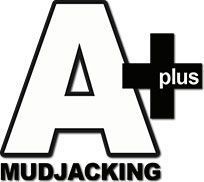FAQs
APlus Mudjacking
Do you offer any warranties?
At APlus Mudjacking, we provide a three-year warranty for our mudjacking services in the Overland Park, KS area. For detailed information about our warranty coverage and terms, we encourage you to contact our office directly.What is mudjacking?
Mudjacking, also referred to as slabjacking or concrete leveling, is a technique used to elevate and level concrete slabs that have sunk or become uneven. This method can be applied to various surfaces such as driveways, sidewalks, patios, and garage floors. Our team at APlus Mudjacking in Overland Park, KS has accumulated over 20 years of combined experience in providing mudjacking services.How does mudjacking work?
The mudjacking process involves several steps to lift and level sunken concrete. First, small holes approximately 2 inches in diameter are drilled into the affected concrete slab. Next, a hydraulic pump is used to inject a slurry mixture, typically composed of water, soil, sand, and cement, beneath the slab. As this mixture fills the voids under the concrete, it generates sufficient pressure to raise the slab to its original position. Once the slab is level, the drill holes are filled, and any surface cracks are sealed. For a free estimate on mudjacking services in Overland Park, KS and surrounding areas, please contact APlus Mudjacking.When is mudjacking necessary?
Mudjacking becomes necessary when concrete slabs have settled or become uneven due to various factors. These can include soil erosion, inadequate soil compaction, tree roots causing concrete displacement, or water accumulation on or around the concrete. For additional information about when mudjacking might be required for your property, we invite you to contact our Overland Park, KS office.How long does mudjacking last?
The durability of mudjacking can vary depending on soil conditions and the quality of work performed. In some instances, the results can last for many years. However, if underlying soil issues are not properly addressed, the concrete may settle again. As a trusted mudjacking company in Overland Park, KS, we offer a comprehensive three-year warranty on our services. We encourage you to reach out to one of our professionals for more detailed information.How much does mudjacking cost?
Mudjacking is generally considered a more cost-effective option compared to complete concrete slab replacement. Typically, the cost ranges from $3 to $6 per square foot. The final price is influenced by factors such as the size of the area, the extent of settlement, and the specific company performing the work. As a leading concrete raising company in Overland Park, KS, we provide complimentary estimates within one week of your inquiry.How soon can the concrete be used after mudjacking?
Following the completion of mudjacking, it is usually safe to walk on the concrete immediately. However, we recommend waiting at least 24 hours before driving or placing heavy objects on the treated area. For reliable mudjacking services in Overland Park, KS, we invite you to contact APlus Mudjacking.Are there any drawbacks to mudjacking?
While mudjacking is an economical solution for leveling concrete, there are several potential drawbacks to consider. It may not address the underlying cause of settling, which could lead to future issues. The process requires drilling relatively large holes, typically about 2 inches in diameter, which may be more noticeable than other methods. The procedure can create some mess during application. Additionally, the material used is quite heavy, potentially placing additional stress on already weak or unstable soil. For a complimentary estimate and further discussion of these considerations, please contact our Overland Park, KS office.Is mudjacking a good option for all concrete problems?
According to our experts at APlus Mudjacking in Overland Park, KS, mudjacking is most effective for leveling and raising large, relatively flat concrete areas. It may not be the optimal solution for severely damaged or intricate concrete surfaces.Is there a better alternative to mudjacking?
Polyurethane foam leveling, also known as polyjacking, is often considered a more advanced alternative to traditional mudjacking. Its advantages include the use of lightweight material, faster curing time, minimal drilling requirements, and the ability to strengthen the underlying soil. However, this method typically comes with a higher cost. For more information about the best solution for your specific needs, we encourage you to contact our Overland Park, KS office.
